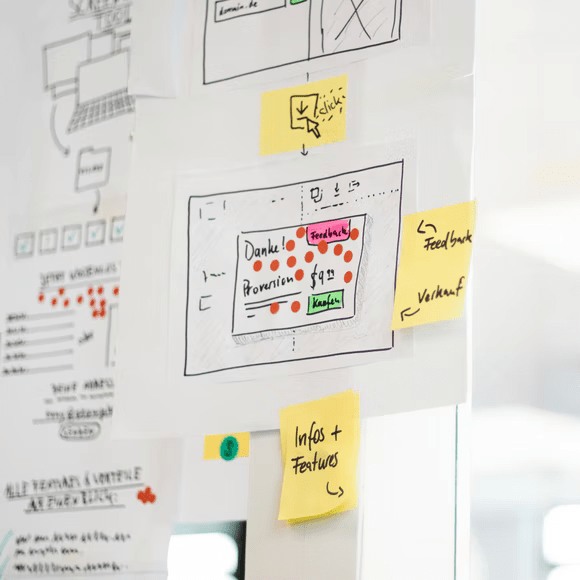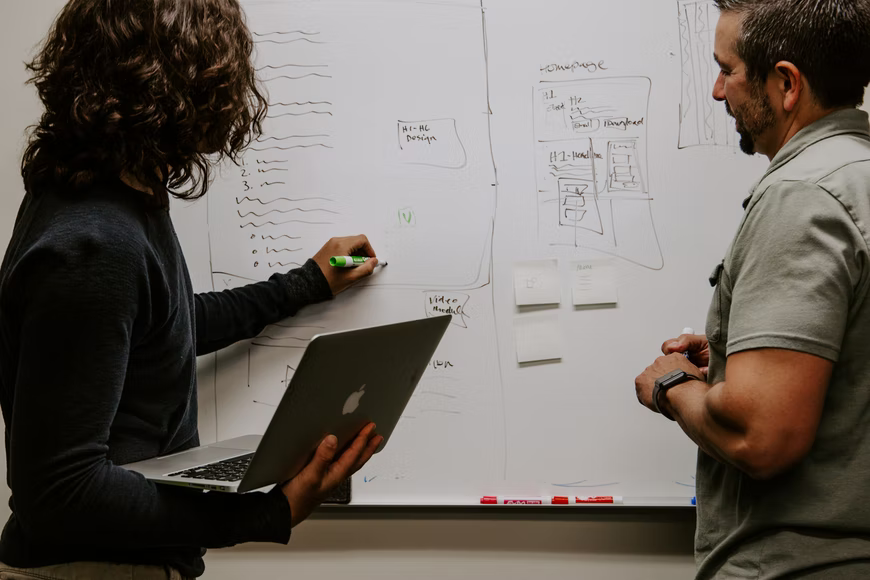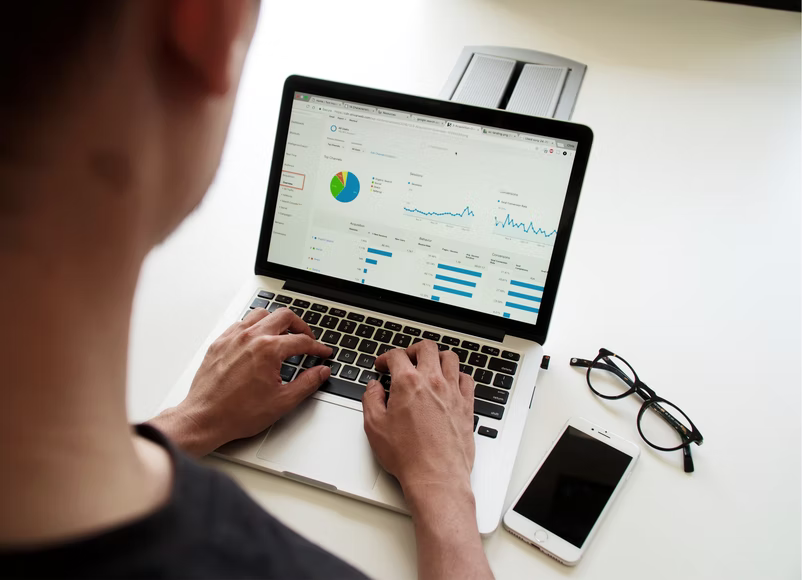Concept Development
After serious deliberation, you notice a great business opportunity in the form of a product or a service. The next course of action is working on executable ideas. Since product development is dynamic, some innovators will initiate the product roadmapping process. Before anything else, a company or an innovator should focus on concept development before bringing the delightful ideas to life.
In brief, concept development provides several tools for the business to verify if the customers like the proposed problem-solving idea and if they’re willing to spend money on the product of the service.
This guide provides valuable information about the concept development process and explains its relevance in the product development life cycle. The article also discusses the different stages of concept development that individual innovators and established companies can adopt to streamline and speed up the launch of new products in consumer markets.
What is concept development?
Concept development represents a set of activities that product development teams perform during the initial stages of a product’s life cycle. It involves identifying customer needs and challenges and collecting relevant data before brainstorming on several viable concepts to solve the problems at hand. The product development team engages in the ideation and concept generation process, subjecting the different ideas to scientific and scenario-based experiences before selecting the most practical approach to a specific user need or challenge.
The concept development process is iterative. Having a concept development plan is beneficial to product developers. It ensures that the innovator or the company has sufficient resources to prioritize proof of concept and establish an error-free idea implementation and development path.
One of the things product developers evaluate in the concept development phase is how the end-users interact with the new product or service and its performance capabilities in different consumer environments. The success of a product depends on the strategies that the company or innovator uses to validate viable solutions.
A typical concept development stage consists of problem identification and definition, concept analysis and idea definition. In defining the executable idea, the product development team outlines the characteristics and capabilities of the product, the anticipated operational life and the cost of acquisition and maintenance.
Benefits of the concept development process
Concept development is synonymous with hardware and software development processes. Concept development also applies to the education sector. Educators expose learners to hands-on activities to enhance their thinking skills and help them understand complex language.
The concept development process has both customer- and business-sided benefits. For the business, it provides checkers to ensure that development teams spend less time and effort to develop products that are a good fit for the target markets. It also ensures that the company will not focus on a market strategy that guarantees financial returns to the business alone. Instead, the company or innovator tweaks the design process to focus on the customer. That way, they create customer-friendly products and can solve complex problems effectively.
The concept development process is vital for:
- Identifying and solving real-life consumer constraints and challenges.
- Identifying and analyzing gaps that can create a business case or a company.
- It enables the product development team to internalize the intensity of common consumer challenges and begin the development of robust solutions.
- It provides metrics for measuring the performance and viability of different product ideas.
- Concept development is an essential feasibility tool for evaluating technical,
How does a concept development process look
The concept development process is a hierarchical procedure that design teams leverage to separate good and bad product ideas. Imagine the amount of time and resources that development teams waste if they focus on developing a product that customers will shun based on quality, pricing or technical applicability.
The goal of concept development is to solve a myriad of consumer problems through an innovative approach while establishing and verifying the market feasibility for the new product. The entire process requires extensive research and collection of data from the ideal customers and any other relevant sources. Utilize the concept development process to discover new opportunities and identify the willingness of your customers to spend their money on the proposed product or service.
A qualitative concept development process involves:
- Consumer research
- Ideation and concept creation
- Estimate the market potential
- Prototyping
- Create a market strategy
- Test marketing
- Evaluate progress
Let us look at all these stages in detail.

1. Consumer research
The first step in the product development life cycle is to interact with the customers to identify their pain points and predominant challenges when using certain products or services. Conducting a customer research study can influence the direction of the company. The data can help the company decide whether to initiate invention design processes or modify existing products and incorporate advanced technologies into them.
Discovering the behaviors of your target market helps the product design team customize the solutions and develop connections to the typical user environments. A frustrated consumer is more likely to pay for a solution that would streamline routine workflows or solve persistent challenges that prevent them from achieving particular personal or business goals.
Companies and innovators use surveys or personas to imitate customers to undertake primary consumer research. The personas or fictional customer profiles enable the product development team to visualize what customers lack and deliberate on converting the need into a profit-making business opportunity.
Advances in technology enable companies to access credible and diverse data sources to assist with the research process. Companies can log into social media platforms, online consumer forums, production websites or innovation channels to identify the prevailing market gaps and trends. The company analyses user comments and reviews to identify predominant consumer challenges and create a comprehensive problem definition.
Another way to conduct research is by sending out anonymous surveys to the purported target markets to collect raw feedback regarding your products or services. There are several ways for structuring the survey questions to cover a quantitative demographic representation to create a comprehensive problem statement.
2. Ideation and Concept Creation
Now that the development team has completed interactions and research of the target markets, it is time to turn the problem statement into a workable idea. The product development journey shifts from customer research to actualization. Product developers initiate brainstorming sessions where individuals with diverse skill sets generate multiple ideas. In a brainstorming session, any idea is a candidate for implementation.
At the most basic, the product development team creates storyboards to outline how their proposed ideas solve user problems. The team then analyses the different ideas against several evaluation metrics to devise a solid proof of concept. In the end, the product development team combines the perspectives of multi-skilled individuals and condenses them into one practical solution for subsequent development.
Brainstorming sessions can take a few minutes to several days based on the complexity of the user problem and the availability of relevant data to speed up the decision-making process. When evaluating potential product concepts, the design team considers the ease of developing the product and its user-centricity. A good product idea is easy to prototype and then deliver real value to the customer by solving a problem through short and simple steps.
The proposed product idea does not necessarily have to be complex or radical. The new product or service may utilize readily available tools to modify customer interactions. In a busy warehouse, it is a priority to automate material handling. It does not imply that the company should do away with manual handling equipment. Instead, the product development team can explore means for installing pneumatic or hydraulic devices with a provision for remote control signals.
3. Estimate Market Potential
After the ideation and concept stage, the company proceeds to product roadmapping detailing when and how to achieve specific product development goals. It paves the way for the company to begin a comprehensive market analysis to identify and estimate the market potential for the new product or service. A market analysis is critical for matching the product concept with actual consumer needs.
When conducting research for the market potential, the company or innovator needs to understand how established brands or competitors are interacting with their current customers. As an innovator, try to explore their marketing strategies and the unique features of their products. Use this information to create a list of all the existing market gaps. Such data enables product developers to devise a plan for capitalizing on the shortcomings to establish a competitive advantage.
When estimating the market potential for the new product, it is crucial to continuously evaluate the prevailing market conditions and the evolution of consumer trends. Customer markets are dynamic, and a solution that seems groundbreaking today may be obsolete in a few days. Consider the Covid-19 pandemic that stalled operations in several textile industries. The innovative companies turned the prevailing problem into a new business stream. They innovatively converted their premises into mask production lines, availing enough pandemic prevention kits to millions of individuals.
Market potential research helps the company estimate the marketing budgets and proactively identify better opportunities for the products. With this information, the company fine-tunes its original concept idea and begins to plan for prototyping before launch.
4. Prototyping
At this stage, the company begins converting viable ideas into tangible products. The company settles on a specific product design and begins creating models that mimic the behavior and performance of the final product. The prototype is vital for communicating how the end product will appear and perform in different user environments.
Prototyping is a cheap and quick way for innovators to validate the practicality of the ideas. That means the company may develop the prototype as a fully or partially functional unit. A partially functional prototype will showcase the unique features of the proposed product, showcasing how they achieve key design objectives.

Prototypes vary depending on the type of product the company is developing. They can be simple paper prototypes, wireframe models for mobile applications and software or advanced rapid prototyping models. To validate a solution, the product development team avails samples or prototypes to in-house and external testers to evaluate usability and provide feedback.
Testing the prototype provides different information for the product development team. Users offer feedback on the usability of products, functionality and capability to use sustainable or friendly materials. As stated earlier, the choice of prototyping varies from company to company. For example, an innovator working on mobile and web-based vehicle tracking solutions. The prototype for such a project could be a low-fidelity model that outlines the end-users dashboard. Alternatively, the developer can release a better version of the software using a high fidelity prototype that contains clickable links for the user to test and verify its functionality.
In product development, it is vital to redesign prototypes to incorporate feedback from consumers. Iterating the design ensures that the company addresses upcoming user challenges earlier and improves buy-in from the target clients. A functional prototype is the surest way to test the proof of concept and debunk any assumptions or myths that product developers rely on early in the product development life cycle.
5. Create a market strategy
At this stage, the company ramps up its product roadmapping strategy and begins viewing it from a business perspective instead of design and development. The company starts creating a market launch and penetration strategy while establishing and reinforcing the product’s long-term vision.
A marketing strategy defines how the company or innovator will avail the new product to customers. It involves a lot of planning relating to:
- How to brand and package the product for the ultimate appeal and appearance.
- The initiatives that the company will adopt for advertising to increase sales.
- The geographic locations that the company wishes the product or service to cover.
- Appropriate pricing models and discounts to attract and retain short and long customers.
- Suitable payment methods for the product.
- Remuneration for sales and marketing teams.
- Warranties and return policies for products or services.
Getting the market strategy right sets up the company for success. Like the previous stages of concept development, continuous market research contributes to developing a robust market penetration strategy. The company must balance production, distribution and pricing to grow consumer segments strategically. It explains why some companies become successful after a short run in consumer markets. They perform a comprehensive competitive analysis and establish a fool-proof marketing strategy that caters to manufacturing and distribution costs to develop a suitable pricing model that guarantees an attractive profit margin.
When establishing a market strategy, the company can offer the same product under different branding or qualities to meet the requirements of low-income and high-income markets. It explains why some companies have standard and premium product offerings.
6. Test Marketing
At this point, the rubber hit the road. It is time to roll out a limited launch of products to target markets and perform an initial product acceptance survey in different consumer segments. Unlike product development, where the company evaluates the functionality and quality of product features, the test marketing stage aims to study customer reactions to new products.
The different marketing strategies depend on the type of insight that the company seeks to collect from the consumers. It can be a controlled, simulated or standard test market. The company can collect enough sales information from these market testing strategies. By comparison, the simulated market strategy provides quick means to collect consumer feedback about products. However, the marketing strategy does not avail quantitative data like the other two strategies.
Insights from test marketing are early indicators of the success of a product. Positive feedback from consumers indicates that the product will enjoy popularity in the target market and the company should fast track the full launch and distribution of the product. Negative feedback shows that customers have poor experiences with the product. It could be a design or quality problem, and the developers must address them promptly. That does not mean that the company should shelve its ambitions to conquer a particular market segment. The team needs to strategize and reevaluate its concept development plan to address the existing market gap.
7. Evaluate Progress
After the test marketing, the company shifts to a full-scale product launch. The company can now develop long-term product distribution and improvement strategies. They then begin tracking the quantity and quality of sales over time. At the same time, the concept development team engages in continuous market research to ensure the company stays ahead of the curve. They can innovatively update product features and reevaluate the pricing models to reflect the economic changes and improve reliance on sustainable manufacturing materials or design processes.

How to improve concept development
We know that concept development provides tools for evaluating the user problems, developing practical solutions and monitoring short-term and long-term product success. Concept development spans the entire life cycle of the product. There are questions that any product development team should answer for them to streamline the process and establish best practices. Here are some of the critical questions:
- Does the problem have more than one solution? Product developers need to identify more than one solution for a user problem. The team should spend enough time in the ideation and concept phase. The brainstorming session exposes the team members to different principles and ideas, enabling them to solve complex problems using simple techniques and strategies.
- Does the concept idea support the business goals of the company? A concept could be unique in solving user problems demonstrating technical capabilities. However, upon review, the developer identifies that it demands a lot of resources and time and could derail the company from its core businesses. To avoid complications, work on products that prove to complement the business goals and mission of the company.
- What technologies are necessary for implementing the idea? Developers require access to different physical and technological tools at every concept development stage. When working on a concept, consider the accessibility of any necessary tools. Do not spend time validating a product concept only to identify manufacturing-related challenges at the prototyping or market testing stage. Avoid using obsolete technologies to develop present-day solutions.
- How many features does the concept contain? In the course of validating ideas, the product development team may establish that a solution can work well with a few product features. Adding more features to such products could improve or complicate the product performance. It is vital to evaluate the number of features for each product and tailor the solution to meet specific user needs. Keep the additional features for future product upgrades.
Variables For Evaluating product capabilities in concept development
When solving consumer problems, there are a few product features that developers should define and consider when designing and testing products before embarking on full-scale production. These product features enable companies and innovators to address a particular user need and set clear timelines for developing the concept. These variables include:
Product functionality
What do the products do? How do its working principles contribute to problem-solving? Customers prefer paying for products that perform as described in press releases and product promotion notices.
Product usability
The concept development process should address how easy it is for the customer to utilize a product for routine activities. Using the new product or service should not create additional challenges for the end-user. Customers shun products that are frustrating to use.
Quality
How does a new product compare to existing or similar products? There are different ways to define product quality. It can range from durability, reliability or flexibility. Consumers have no problem paying a higher premium for products that guarantee safety and deliver impressive results for an extended period.
Product performance
What are some indicators that show the product effectiveness with time? Does the proposed solution have a dashboard for continuously monitoring metrics like equipment uptime, operational speed or internal defects? Take, for example, a company dealing with electric mobility bikes. The user needs to monitor the remaining battery range at any instance. They also need to collect data on the effects of rider behavior on energy consumption. It means that the product developer must sell the product with a visible dashboard that an average user can read and understand
Availability and customer support
When purchasing products, customers go after readily available alternatives. Some customers prefer sourcing products from online stores while others pick them off shelves. Any company needs to avail the products to customers when they need them. Consumers prefer brands that provide support after purchase. It involves installation, maintenance and upgrades. Consumers are less likely to purchase seldom available products in popular physical and online stores.
Customer experience and value for money
Will the customer enjoy using the product to a point they can refer other customers or make additional purchases for the product? The concept development process should empathize with the end-users to optimize their experiences and keep the interactions with products delightful and memorable. In terms of value, the product should reflect its pricing. Expensive products with limited technical capabilities are unattractive. Customers go after competitively priced products that offer value to the users.
Concept Development from an investors perspective
Product development does not only revolve around established companies and their target markets. There’s a new breed of innovators keen to build startups from scratch and turn them profitable within a short period. Most of these startups use product design sprints to analyze consumer markets and identify user needs that require immediate action. After that, they begin developing a disruptive solution. After creating a proof of concept, they approach investors who provide seed money for actualizing projects.
Investors focus on the return on investment to estimate the amount of funding they can offer to such innovators. The innovator works on everything from research to market strategy and provides factual figures for the innovator to evaluate and make decisions for subsequent funding. When dealing with an investor, product development teams need to clearly explain how to establish efficient production and distribution systems to reach as many customers as possible. Investors are likely to pump their money into products whose customer demands are verifiable or predictable.
When presenting concepts to investors, ensure other product development teams possess sufficient information and performance data that external stakeholders can infer. That way, the company can attract more funding and position its businesses on a positive growth trajectory.
Summing up
Concept development is an indispensable part of revolutionary product development with benefits that cut across digital and physical products. Several businesses have grown from simple concept development processes to become renowned global brands. The entire process occurs in different stages and ensures that developers spend less time implementing practical ideas.
Concept development is an equally important tool for educators to introduce complex topics to learners. Product development experts can use this methodology to impart knowledge to a diversified product development team working on a fresh idea in any industry.
The product development strategy enables individuals and companies to research their competitors to improve product design and capture underutilized market segments. The entire process requires continuous data collection and analysis to avoid unnecessary pitfalls that may delay the introduction of products to target markets.
Anyone working on a new product or improving existing products needs to master the art of concept development. They can replicate the stages discussed in the previous sections of this article or modify them to match the business goals or operational tastes.
